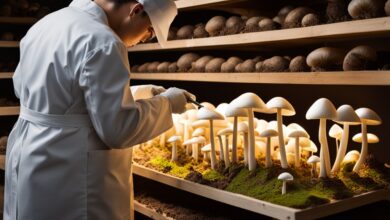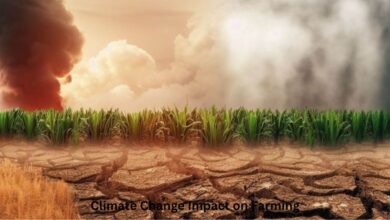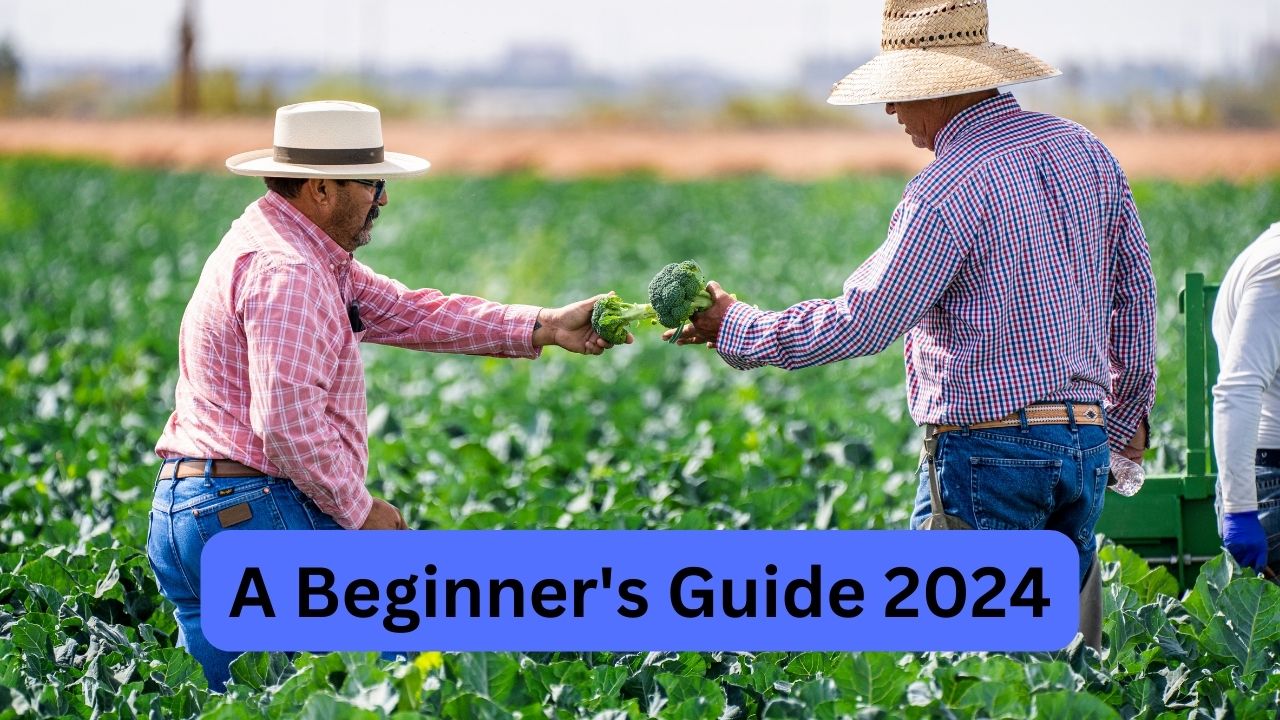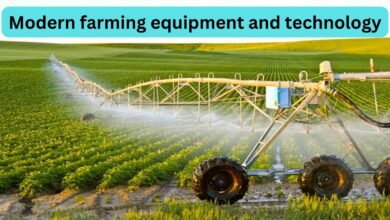How to Do Fish Farming: A Beginner’s Guide 2024
Starting fish farming is both exciting and rewarding. It can be a sustainable way to make money and feed people. This guide is for beginners or those looking to grow their fish farming business in India.
We’ll cover the basics of fish farming. You’ll learn about different systems, what to think about before starting, and how to set up your farm. We’ll also talk about keeping fish healthy, improving water quality, and harvesting and processing your catch.

This guide is for those wanting to raise freshwater or saltwater fish. It gives you the tools and knowledge for fish farming, aquaculture, starting a fish farm, and fish farming techniques. Start this journey with confidence and make the most of your fish farming.
Understanding the Basics of Fish Farming
Fish farming, also known as aquaculture, is raising fish in places like ponds, tanks, or systems that recycle water. It’s becoming more important to meet the world’s growing need for seafood. Let’s look at the types of fish farming systems and what to think about before starting a fish farm.
Also Read : Growing Mushrooms: How To Do Mushroom Farming 2024
Types of Fish Farming Systems
There are many types of fish farming systems to choose from, each with its own benefits and challenges:
- Pond-based fish farming uses ponds, natural or made by humans, to raise fish. It’s often the cheapest option but needs a lot of land and can be affected by the environment.
- Tank-based fish farming grows fish in tanks, either inside or outside. This method has better control over water quality and uses space more efficiently.
- Recirculating Aquaculture Systems (RAS) recycle and reuse water, using less water and reducing waste. RAS give the most control over the fish environment but are expensive to start and need special knowledge.
Factors to Consider Before Starting
Before starting a fish farming venture, think about these important points:
- Climate and Water Availability: The weather and having enough water are key to a fish farm’s success.
- Target Fish Species: Different fish need different conditions like water quality and temperature. Picking the right fish for your place and resources is important.
- Regulatory Requirements: Fish farming has rules and licenses that vary by location. Knowing the laws and getting the right permits is a must.
- Financial Considerations: Starting a fish farm costs a lot, including land, equipment, and ongoing expenses. Good financial planning and budgeting are needed for success.
Knowing about types of fish farming systems and the factors to consider before starting a fish farm helps you make smart choices. This can increase your chances of doing well in this growing industry.
Setting Up Your Fish Farm
Starting a fish farm needs a lot of thought about where it will be and how the ponds are built. These are key to making a fish farm successful.
Also Read : Discover Benefits of Vertical Farming Systems 2024
Choosing the Right Location
Finding the perfect spot for your fish farm is very important. When picking a location for fish farm, think about these things:
- Water quality: Make sure the water is clean with the right pH, temperature, and oxygen levels for the fish.
- Accessibility: Pick a spot that’s easy to get to for bringing in feed, gear, and fish.
- Environmental regulations: Check and follow local rules about starting a fish farm infrastructure.
Constructing the Fish Ponds
How you design and build the building fish ponds is key to your farm’s success. Here are important points to consider:
- Pond size and depth: Figure out the best size and depth for the fish, how many you’ll have, and how the water will move.
- Pond lining: Use a strong, waterproof material to keep the ponds from leaking.
- Water management: Set up a good system for bringing in water, moving it around, and getting rid of it to keep the water clean.
By picking a great location and building the ponds well, you’ll set up a strong fish farm. This will help you have a healthy and successful fish farm.

how to do fish farming
Starting a fish farm needs a deep knowledge of key techniques and methods. It’s important for both beginners and experienced farmers. We’ll cover the main parts of fish farming, helping you with the steps for success.
Stocking density is a key part of fish farming. It’s about finding the right number of fish in a space. Too many fish can cause stress and disease, while too few won’t use resources well. Think about the fish type, water quality, and resources to find the best balance.
Also Read : Lohagarh Farms: Rural Getaway Near Delhi
Feeding your fish right is also crucial. A good feeding schedule affects their growth and health. Consider the water temperature, fish size, and what they need nutrition-wise. Good nutrition helps the fish grow strong and makes your product better.
Stopping diseases is key to a successful fish farm. Using effective disease management strategies lowers the risk of outbreaks. This means keeping things clean, checking the water, and acting fast if fish get sick. Being proactive keeps your fish healthy and your farm running well.
| Fish Farming Technique | Key Considerations |
|---|---|
| Stocking Density | Species, water quality, available resources |
| Feeding Regimes | Water temperature, fish size, nutritional requirements |
| Disease Prevention | Biosecurity measures, water quality monitoring, prompt response |
Learning these fish farming techniques will help you start a successful fish farm. Remember, success comes from staying informed, flexible, and dedicated to improving your methods.

Maintaining a Healthy Fish Population
Keeping your fish healthy is key to a successful fish farm. We’ll cover important topics like water quality and feeding your fish right. This will help you make the best home for your fish.
Water Quality Management
Good water quality is vital for your fish’s health and growth. You need to test the water, use good filters, and keep the pH right. These steps help make a safe place for your fish.
- Conduct routine water tests to check pH, temperature, and oxygen levels.
- Use strong filters to clean the water of waste and bad stuff.
- Keep the pH levels right for your fish’s health.
Fish Feeding and Nutrition
Feeding your fish right is key to their health and growth. Know what your fish need to eat and how to feed them. This ensures they stay healthy.
| Nutrient | Importance | Sources |
|---|---|---|
| Protein | Helps muscles grow and develop | Fish meal, soybean meal, and other high-protein foods |
| Fats | Gives energy and helps organs work right | Fish oil, vegetable oils, and other fats |
| Carbohydrates | Give energy | Grains, starches, and other carbs |
Good water and the right food keep your fish healthy and long-lived. This is the base of a successful fish farm.
Harvesting and Processing Your Fish
As a fish farmer, you’ll reach a point where harvesting your fish is necessary. This step is key, as doing it right affects the quality and safety of your product. We’ll look at the best ways to fish harvesting, fish processing, and keeping your seafood quality high.
Timing the Harvest
Choosing the right time to harvest your fish is crucial. You need to consider fish size, market demand, and water quality. Watching your fish grow and stay healthy helps you know when it’s the best time to fish harvesting.
Proper Handling Techniques
When it’s time to harvest, handle the fish carefully. Keeping the fish stress-free and undamaged during fish harvesting keeps the product quality high. Use special gear like nets and tanks to move the fish safely from water to processing.
Post-Harvest Processing
After harvesting, the next step is fish processing. This includes sorting, cleaning, filleting, and packaging. Keeping the fish fresh and safe requires proper post-harvest handling. This means controlling temperatures and keeping things clean.
Value-Added Processing
For more profit, think about value-added processing. Options like smoking, canning, or making fish jerky or oil supplements can help. Diversifying your products can attract more customers and increase your business’s value.
Getting good at fish harvesting, fish processing, and post-harvest handling is key for quality seafood. By following best practices and keeping up with trends, you can make your fish farm successful. This ensures you give your customers a top-quality product.
Conclusion
In this guide, we’ve looked into the world of fish farming. We covered its basics, different systems, and what to think about before starting. The fish farming industry in India is growing fast and full of new ideas.
Fish farming is a great chance for those who want to start a business, small farmers, or anyone into sustainable food. By using new methods and tech, fish farmers in India can meet the growing demand for fresh seafood at home and abroad.
The future of fish farming in India looks good. We’re seeing better water management, disease control, and feed quality. With government support and more people wanting healthy, local seafood, the industry is getting more appealing. We urge you to explore fish farming further. You could do more research, get expert advice, or begin your own fish farm.
FAQ
What are the different types of fish farming systems?
Fish farming systems include pond-based, tank-based, and recirculating aquaculture systems. Each type has its own benefits and things to think about. These include water management, how many fish you can keep, and the effect on the environment.
What are the key factors to consider before starting a fish farm?
Before starting a fish farm, think about the climate, water quality, and the fish you want to raise. Also, consider the demand for your fish, and the rules and licenses needed in your area.
How do I choose the right location for my fish farm?
Choosing the right spot for your fish farm is important. Look at the water quality, soil, how easy it is to get to, and how close it is to markets or places where you can process your fish.
What are the best practices for constructing fish ponds?
Building fish ponds requires careful planning. Focus on the pond’s design, the materials used, and making sure you have good water management. Don’t forget to add features like structures for water flow and air mixers.
How can I effectively manage the water quality in my fish farm?
Keeping the water in your fish farm clean is key for the fish’s health and growth. Check the water often, use filters and air systems, and adjust things like pH and oxygen levels as needed.
What are the best fish feeding and nutrition practices?
Feeding your fish the right food is important. Work out how much and how often to feed them, based on their type, age, and size. This helps them grow well.
How do I properly harvest and process my fish?
Harvesting and processing your fish needs to be done carefully to keep the quality high and ensure safety. Use the right methods for catching, handling, and moving the fish. Also, follow the best practices for storing, processing, and packaging your fish.




